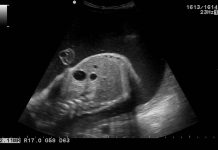A feeding tube is used when a baby is not able to take food by mouth, it’s a small soft plastic tube which is placed through the nose or mouth into the stomach, the purpose of this tube is to provide feeding and medicines to the baby stomach until he or she can take food by mouth. It is normally used in hospitals but it can also be used at home to feed infants.
The feeding tube or the gavage tube can we inserted and then removed for each feeding. One can also use an indwelling feeding tube meaning it remains in the infant for multiple feedings at a time. It can be used to give both breast milk and formula as well.
This disposable tube is made of polyvinyl is used for feeling sick infants, It comes in sizes ranging from 5 to 9 and it is used in the treatment of volvulus in infant.
Why Is A Feeding Tube Used?
Easy to Use
Sick or premature babies lack strength and coordination which is required in feeding from the breast or bottle. Since such infants are not able to suck or swallow well enough to bottle or the natural way of breastfeeding, infant tube feedings allows the baby to get some or all of their feeding into the stomach directly.
Safe
It is the safest and most efficient way to provide good nutrition. Apart from this oral medicines can also be given through this tube and there are other reasons as well for why an infant might need a feeding tube they are as follows;
- If the baby has irregular weight gaining patterns
- Weakness in sucking or the complete absence of swallowing reflex in baby
- Defects which are abdominal or gastrointestinal
- Electrolyte imbalance or respiratory Distress
How Is A Feeding Tube Placed?
Also known as gavage tube, the infant feeding tube is placed gently through the nose or through the mouth into the stomach. In order to confirm its correct placement an x-ray is done. The tip of the tube is placed past the stomach into the small intestine for infants who have feeding problems as it provides continuous and slower feedings.
Step By Step Placement Of The Feeding Tube
- While performing this procedure the nurse will measure the length from the baby’s nose or mouth to their stomach.
- After this is done the nurse marks the tube so it is just the right length for the infant.
- Next the tip of the tube is lubricated with sterile water or water based lubricating gel and then they insert the tube very carefully into the infants Mouth or nose.
Ways To Check The Placement of Feeding Tube
Placement is checked by the nurse by inserting a small amount of air into the tube and listening for the contents to enter the stomach of the baby, this practice indicates that the tube has been placed correctly.
One of the way of testing the correct placement of tube without getting an x-ray is that some of the liquid from the babies stomach should be withdrawn and then the pH can be tested with a simple testing strip, this procedure ensures that that you pass directly into the stomach and not into the lungs. After insertion it is taped to the mouth or the nose of the baby so that it stays in place.
Precautions
If the new-born has a skin condition or a sensitive skin, the doctor may use a pectin barrier or paste to make sure that the skin doesn’t hear when the tape is removed. With the help of devices the tube is secured internally by using cloth tape that passes behind the nasal bone after that doctor orders X ray of the Childs abdomen to ensure that the tube is safely in the stomach
Subsequently, the baby is given formula, breast milk or medicine by injecting it with syringe or through and infusion. The doctor may either cap of the tube or remove the tube once the feeding is done. While doing so make sure that your baby remains upright or inclined in order to prevent the feeding from been regurgitated.
What Are The Risks Of A Feeding Tube?
Generally the feeding tubes are effective and very safe however, sometimes problems may occur even when the tube is placed properly inside the stomach some of these problems are as follows
- Minor bleeding caused due to irritation of the nose, mouth or stomach.
- If the tube is placed through the nose an infection of the nose could occur.
- If the feeding tube is not placed in a proper position the baby may have problems with breathing or spitting up.
When the feeding tube is inserted in the baby it does not matter how gently it is done because it becomes uncomfortable for the infant. Though the risk of the tube exist but they are minimal, It can cause nasal irritation, infection of bleeding in some cases which causes the baby some discomfort.
What Happens When The Feeding Tube Is Removed?
When the tube is removed from the infant stomach, the contents of the stomach will leak and they will continue to do so until the track closes completely, it takes more than two weeks for the track to heal and close completely and during this time the stomach contents will continue to leak.
Conclusion
The infant feeding tube can puncture the stomach in some rare cases. In majority of cases, infants need feeding tubes only until they become strong enough or well enough to feed on their own. If the mother of the infant is experiencing sadness talking to a doctor might help about the emotions they are feeling as doctors can help you find support groups and evaluate you for the signs of postpartum depression.
References
https://www.mountsinai.org/health-library/special-topic/feeding-tube-infants
https://www.healthline.com/health/feeding-tube-infants
https://medlineplus.gov/ency/article/007235.htm













